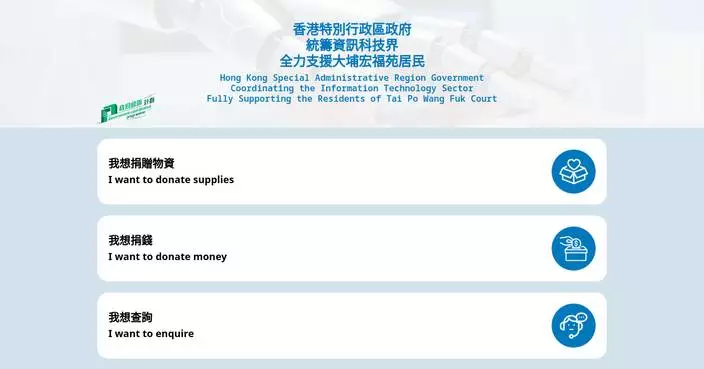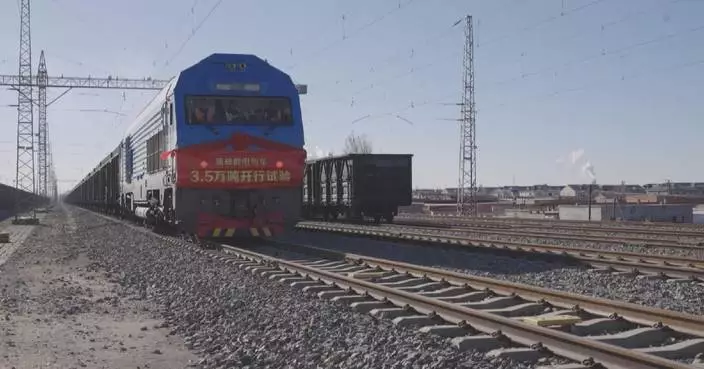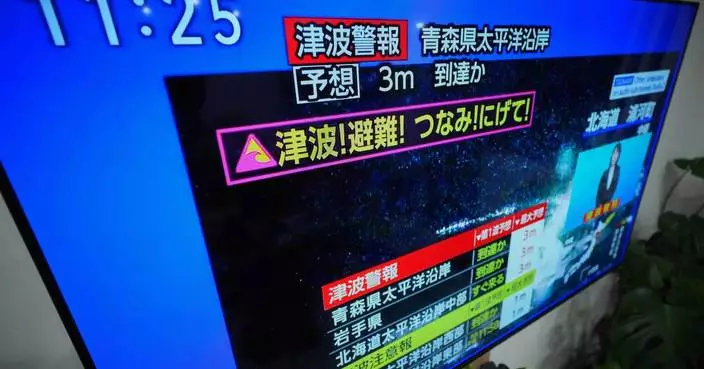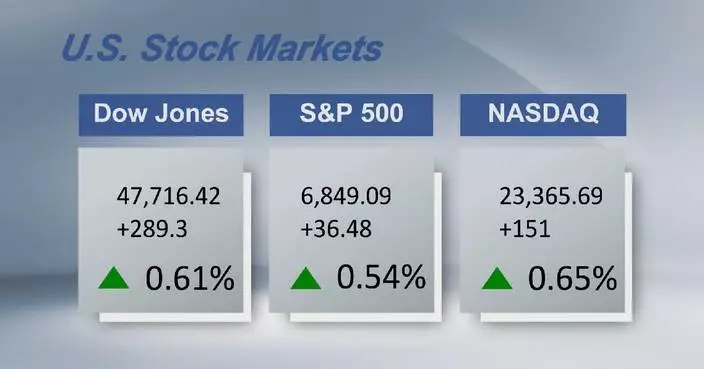Feature · News

Iraq's election result ratified by Supreme Federal Court as premiership remains up for grabs
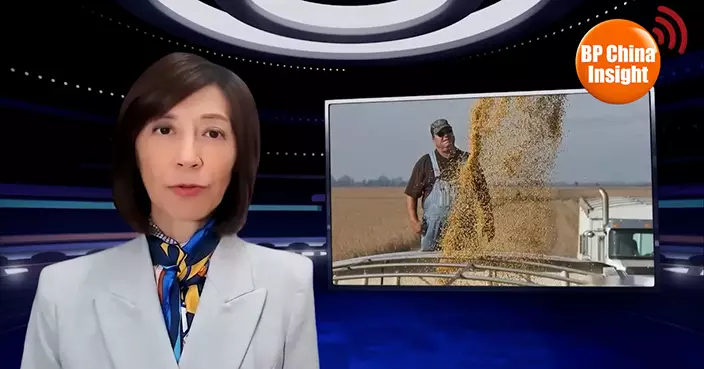
BP China Insight : Goldman Sachs: China Effectively Reducing Soybean Import Dependence

Annual grain output of Heilongjiang ranks first in China for 16th consecutive year

Hong Kong Hosts Successful Conclusion of National Games for Persons with Disabilities and Special Olympic Games

Education on pause in Cambodia as border fighting continues

China to prioritize high-quality development of marine economy
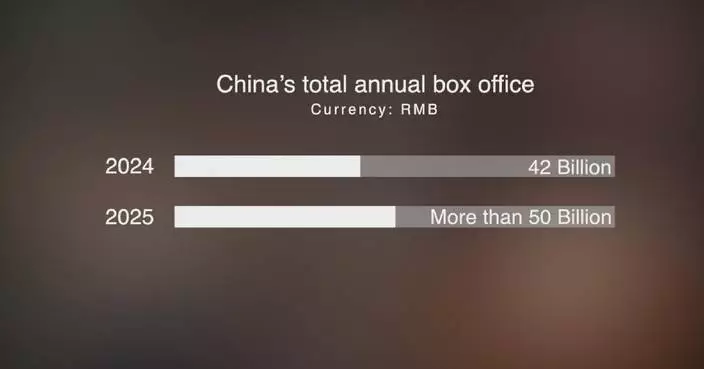
Chinese mainland's film ticket sales in 2025 exceed 50 billion yuan

Photos show the scene of a deadly attack on Sydney's Bondi Beach

China commits to building full-chain system for ensuring people's livelihood

Transitional housing projects support Tai Po fire survivors

Mass shootings are rare in Australia. Here is a look at some previous attacks

Guangdong promotes bird-friendly netting to protect migratory birds, farm fields

Pope criticizes prison overcrowding during special Mass for inmates, guards and families

What to know about the US military's role in Syria after deadly IS attack

BP China Insight : NYT : Trump Isn’t Fighting a Cold War with China—He’s Waging a Civil War
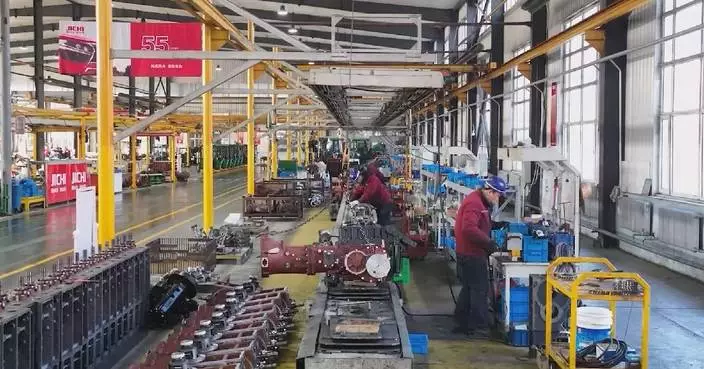
China advances agricultural machinery innovation to boost grain production
Chinese mainland's film ticket sales in 2025 exceed 50 billion yuan

Photos show the scene of a deadly attack on Sydney's Bondi Beach
China commits to building full-chain system for ensuring people's livelihood
Transitional housing projects support Tai Po fire survivors

Iraq's election result ratified by Supreme Federal Court as premiership remains up for grabs

BP China Insight : Goldman Sachs: China Effectively Reducing Soybean Import Dependence
Annual grain output of Heilongjiang ranks first in China for 16th consecutive year

Hong Kong Hosts Successful Conclusion of National Games for Persons with Disabilities and Special Olympic Games
Education on pause in Cambodia as border fighting continues
China to prioritize high-quality development of marine economy

Mass shootings are rare in Australia. Here is a look at some previous attacks
Guangdong promotes bird-friendly netting to protect migratory birds, farm fields

Pope criticizes prison overcrowding during special Mass for inmates, guards and families

What to know about the US military's role in Syria after deadly IS attack

BP China Insight : NYT : Trump Isn’t Fighting a Cold War with China—He’s Waging a Civil War
China advances agricultural machinery innovation to boost grain production
Feature·Bloggers

【InsightSpeak】The executive–legislative relationship under a new electoral culture

【What Say You?】Trump and Starmer Barely Bother with Jimmy Lai – Just Lip Service to Check the Box

【Ariel】9 Arrested for Illegal Drills: Tai Po Fire Lurkers Ready to Strike

【Mark Pinkstone】The return of Roach and his poisoned tongue

【What Say You?】UK Agitators Hijack Grief: The "Triplet" Protest Strategy

【Bastille Commentary】Tightening the Net on Subversive “Parliaments” Is Exactly the Point

Major win for ultra-conservative gives Chile its most right-wing president in decades
- Former Hong Kong media mogul Jimmy Lai to hear verdict in his landmark national security case
- A Brown University student survived being shot in high school. Then came the active shooter alerts
- Bondi beach was a laid-back haven before a mass shooting horror unfolded
- Brazilians protest a bill that would reduce former president Bolsonaro’s time in jail
- Photos show police investigation of a shooting at Brown University
- Person of interest detained in Brown University shooting that killed 2 and wounded 9
- Bystander shown in videos disarming gunman during Australian beach shooting commended for bravery
- The Latest: A person is in custody after deadly Brown University shooting leaves 2 dead, 9 wounded
- Guatemala declares state of emergency after armed attacks kill at least 5

Voting begins in Chilean presidential runoff
- Ukraine says ready to accept NATO-style security guarantees
- China to see gas output hitting 300 bcm by 2030: report
- Spring Festival Gala logo, theme light up on landscape buildings across China
- Archaeologists discover wide variety of cultural relics from Luojiahe Site in Shaanxi
- Prehistoric grain storage pits provide new evidence for study of early civilization in northwest China
- South China's Guangxi sees 10-pct growth in trade with ASEAN in Jan-Nov period
- China to further develop embodied intelligence with focus on robots' learning ability
- Prehistoric grain storage pits discovered in northwest China
- Embodied AI contest to promote AI application in daily life: insiders

AbbVie Ranked #15 in the Inaugural Fortune 100 Best Companies to Work For Southeast Asia 2025 List
- CREATIP Wins Gold for Independent Agency of the Year at Campaign 2025 -- Leading Digital Marketing Agency in Korea Strengthening Korea & Japan Performance Marketing Across APAC
- Five Talent Shifts Redefining Hiring in Hong Kong: PERSOL Unveils 2025 Workforce Insights
- Chris Colahan to Join Chubb as Head of Commercial Property & Casualty, Asia Pacific
- Hassett says Federal Reserve can reject Trump's views if he is chair
- From hoops to oysters: Inside the unexpected second acts of WNBA stars
- Like many holiday traditions, lighting candles and fireplaces is best done in moderation
- Morocco aims to boost legal cannabis farming and tap a global boom
- Jury says Johnson & Johnson owes $40 million to 2 cancer patients who used talcum powders
- Official streaming platform for the Games of the Future Abu Dhabi 2025 powered by ADNOC launches ahead of opening competition

Humanoid robots take center stage at Silicon Valley summit, but skepticism remains
- Winter virus season so far is not too bad, but doctors worry about suffering to come
- Ford turns to stepped-up tech and cooperation with police to thwart F-150 pickup thieves
- A Chinese whistleblower now living in the US is being hunted by Beijing with help from US tech
- Appeals court backs contempt finding against Apple, but reopens a door for iPhone app fees
- Disney invests $1B in OpenAI in deal to bring characters like Mickey Mouse to Sora AI video tool
- These are the key AI players on the cover of Time's 'Architects of AI' magazine
- Open AI, Microsoft face lawsuit over ChatGPT's alleged role in Connecticut murder-suicide
- NASA loses contact with its Maven spacecraft orbiting Mars for the past decade
- Professor Youmin Xi honoured with University of Liverpool Fellowship

Hallmark holiday movie fans are flocking to Connecticut's quaint filming locations
- Haruki Murakami honored with awards and a jazzy tribute in New York
- Egypt reveals restored colossal statues of pharaoh in Luxor
- Amy Schumer says she and her husband have decided to end their marriage
- Affable comedy acting legend Dick Van Dyke turns 100 years old
- Hailee Steinfeld and NFL husband Josh Allen are expecting their first child
- Meet the Indigenous women behind Mexican President Claudia Sheinbaum's 'most stylish' looks
- Oscar winner Morricone’s lost opera debuts in Naples after 30 years
- Bestselling British writer Joanna Trollope dies at 82
- It feels good to be Jelly Roll. And now, he's ready to win a Grammy

Suns All-Star guard Devin Booker returns vs. Lakers after missing 3 games with groin strain
- Donovan Mitchell on Cavs being booed at home after loss to Hornets: `I would boo us, too.'
- Top photos from Week 15 of the NFL season
- Patrick Mahomes suffers a torn ACL and Chiefs say he's considering surgical options
- Matthew Stafford rallies Rams to 41-34 victory over Lions, clinching another playoff berth
- Mahomes tears ACL as Chargers eliminate Chiefs from playoff contention with 16-13 victory
- Purdy's 3 TD passes lead 49ers to 37-24 win over Titans
- Paul Wiggin, College Football Hall of Famer and former coach, dies at 91
- Zion Williamson returns to Pelicans to face Bulls
- Packers pass rushing standout Micah Parsons hurts left knee on non-contact play against Broncos

Hong Kong Police Arrest Woman for Unlawful Drilling Amid Ongoing Subversion Investigation
- No New Chikungunya Cases in Hong Kong; Tsing Yi Trails Closed for Mosquito Control Efforts
- HKU Team Tracks Superbug Genes Across Hong Kong Waters
- Digging deep to overcome obstacles
- Free Chinese Medicine Consultations Available for Residents Affected by Tai Po Fire Starting December 15
- New Vehicle Registration Rules Take Effect December 22: Owners Responsible for Unlicensed Vehicles
- Central Kowloon Bypass Yau Ma Tei Section Opens December 21, Reducing Travel Time to Kowloon Bay to Five Minutes
- Government Task Forces Mobilize $3.7 Billion Fund for Wang Fuk Court Fire Relief Efforts
- Hong Kong Reports No New Chikungunya Cases, Tsing Yi Trails Closed for Mosquito Control Efforts
- Hong Kong Launches GoGlobal Platform to Support Mainland Enterprises in Global Expansion

Xinjiang's desert-edge farmlands become winter paradise for migratory birds
- EU Chamber of Commerce sees renewed potential in Hainan after special customs operation
- China's Haiji-2 deepwater jacket platform boasts multiple world-leading technologies
- Desert giant reed brings ecological, economic gains in Xinjiang's Tumxuk
- China remains largest driver of world economic growth: official
- China makes breakthrough in deep-water reef limestone oil extraction
- Taiwan compatriot shares ancestors' stories on Nanjing Massacre Memorial Day
- Int'l experts hail China's economic resilience with high-quality development
- Taiwan’s historical epic uncovers Japan’s atrocities during colonial rule
- HK property developer praises government's efficient rehousing efforts after fire
Category · News

Suns All-Star guard Devin Booker returns vs. Lakers after missing 3 games with groin strain

Donovan Mitchell on Cavs being booed at home after loss to Hornets: `I would boo us, too.'

Major win for ultra-conservative gives Chile its most right-wing president in decades

Top photos from Week 15 of the NFL season

AbbVie Ranked #15 in the Inaugural Fortune 100 Best Companies to Work For Southeast Asia 2025 List

CREATIP Wins Gold for Independent Agency of the Year at Campaign 2025 -- Leading Digital Marketing Agency in Korea Strengthening Korea & Japan Performance Marketing Across APAC

Patrick Mahomes suffers a torn ACL and Chiefs say he's considering surgical options

Matthew Stafford rallies Rams to 41-34 victory over Lions, clinching another playoff berth

Mahomes tears ACL as Chargers eliminate Chiefs from playoff contention with 16-13 victory

Former Hong Kong media mogul Jimmy Lai to hear verdict in his landmark national security case

Purdy's 3 TD passes lead 49ers to 37-24 win over Titans

A Brown University student survived being shot in high school. Then came the active shooter alerts

Bondi beach was a laid-back haven before a mass shooting horror unfolded

Paul Wiggin, College Football Hall of Famer and former coach, dies at 91

Zion Williamson returns to Pelicans to face Bulls

Packers pass rushing standout Micah Parsons hurts left knee on non-contact play against Broncos

Timberwolves hold Anthony Edwards out for second straight game with soreness in right foot

India beats South Africa by 7 wickets to take 2-1 lead in T20 series

Commanders beat the Giants 29-21 to end their losing streak at 8 games

Brazilians protest a bill that would reduce former president Bolsonaro’s time in jail
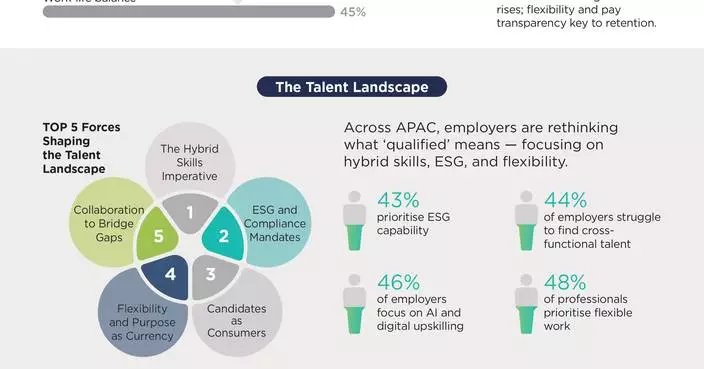
Five Talent Shifts Redefining Hiring in Hong Kong: PERSOL Unveils 2025 Workforce Insights

Photos show police investigation of a shooting at Brown University

Mbappé scores in his return from injury as Madrid beats Alaves in boost for Alonso

Caleb Williams throws for 2 TDs, Bears pound Browns even as Myles Garrett closes in on sacks record

Knueppel scores 29 points, Miller has 25 in Hornets' 119-111 OT win over Cavaliers

Lamar Jackson's 2 TD passes, long pick-6 propel Ravens to 24-0 win over Bengals

Joe Burrow blames himself after shutout loss to Ravens that ends Bengals' playoff hopes

Cleveland Browns' Myles Garrett moves closer to sack record while playing through hip issue

Philip Rivers throws first-half TD pass for Colts in 44-year-old's first start in nearly 5 years

Patriots vow not to dwell on missed opportunity against Bills with division title still in reach

Guenther scores in OT to complete Mammoth's 5-4 comeback win over reeling Penguins

Person of interest detained in Brown University shooting that killed 2 and wounded 9

Jaguars overwhelm Jets from start to finish in 48-20 rout, reach 10 wins

Bagley's double-double helps Wizards snap 4-game skid with 108-89 win over Pacers

Bystander shown in videos disarming gunman during Australian beach shooting commended for bravery

The Latest: A person is in custody after deadly Brown University shooting leaves 2 dead, 9 wounded

Arizona's Baccellia expected to fly home with team after leaving field on stretcher with neck injury

Kristaps Porzingis to miss two weeks with illness, Trae Young nears return

Guatemala declares state of emergency after armed attacks kill at least 5

C.J. Stroud leads Texans to 6th straight win, 40-20 over Cardinals

Bills rally from 21-point deficit to beat Patriots 35-31, stay alive in AFC East race

Lens claims Christmas top spot in Ligue 1. Greenwood's late goal helps Marseille beat Monaco

Puerto Rico governor signs bill that critics say will restrict access to public information

Father and son gunmen kill at least 15 people in attack on Hanukkah event at Sydney's Bondi Beach

Jalen Hurts rebounds with 3 TD passes as Eagles snap losing streak in 31-0 rout of Raiders

Chris Colahan to Join Chubb as Head of Commercial Property & Casualty, Asia Pacific

Inter moves top of Serie A after Milan and Napoli drop points

Zelenskyy offers to drop NATO bid for security guarantees but rejects US push to cede territory

9 African migrants died in freezing temperatures near Morocco-Algeria border

Hassett says Federal Reserve can reject Trump's views if he is chair

Nobel laureate Ales Bialiatski describes Belarus prison ordeal in first interview after release

Kane rescues Bayern from slipping to first Bundesliga defeat of the season against last-placed Mainz

Attacker who killed US troops in Syria was a recent recruit to security forces, official says

Milan Momcilovic scores 18 points to help lift No. 4 Iowa State over Eastern Illinois 78-53

No. 3 South Carolina won't have leading rebounder Okot and reserve Makeer against Penn State

Zeev Buium scores in his Canucks debut as Vancouver beats the Devils 2-1
Voting begins in Chilean presidential runoff

Photos of voters taking part in Chile's runoff presidential election

No trophy for Nancy as Celtic falls to shock defeat to St. Mirren in Scottish League Cup final

Hamas confirms the death of a top commander in Gaza after Israeli strike

For players like Knicks guard Tyler Kolek, the NBA Cup may be quite the payday

Israel's Netanyahu lashes out while world shows shock and sympathy over Australia shooting

Man City and Aston Villa win to stay in touch with Premier League leader Arsenal
Ukraine says ready to accept NATO-style security guarantees

Mass shooting at Jewish event on Bondi Beach follows rising antisemitism in Australia

Veteran pitcher Merrill Kelly returns to Diamondbacks on a $40 million, 2-year deal, AP source says
China to see gas output hitting 300 bcm by 2030: report

As gerrymandering battles sweep country, supporters say partisan dominance is 'fair'

Michigan search includes Arizona State's Kenny Dillingham, Missouri’s Eli Drinkwitz, AP source says

TJ Watt is basically irreplaceable for the Steelers. Nick Herbig and Jack Sawyer are ready to try

From hoops to oysters: Inside the unexpected second acts of WNBA stars

Photos show waterlogged Washington state in US
Spring Festival Gala logo, theme light up on landscape buildings across China

New Zealand skier Alice Robinson wins World Cup super-G; Lindsey Vonn 4th

Hallmark holiday movie fans are flocking to Connecticut's quaint filming locations

Haruki Murakami honored with awards and a jazzy tribute in New York

Norwegian skier Timon Haugan wins Val d'Isere slalom

Another blue wave? Meet the Democrat trying to make it happen and the Republican trying to stop her

Arctic air mass pushes to the U.S. South; Midwest also bracing for dangerous wind chills

Myanmar calls on countries to take back citizens held in crackdown on scam centers

Egypt reveals restored colossal statues of pharaoh in Luxor

Like many holiday traditions, lighting candles and fireplaces is best done in moderation

Hong Kong Police Arrest Woman for Unlawful Drilling Amid Ongoing Subversion Investigation

Thailand says Cambodian rocket fire has caused its first civilian death in new border fighting




